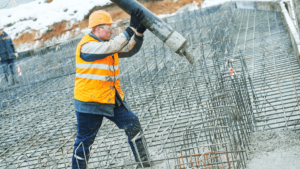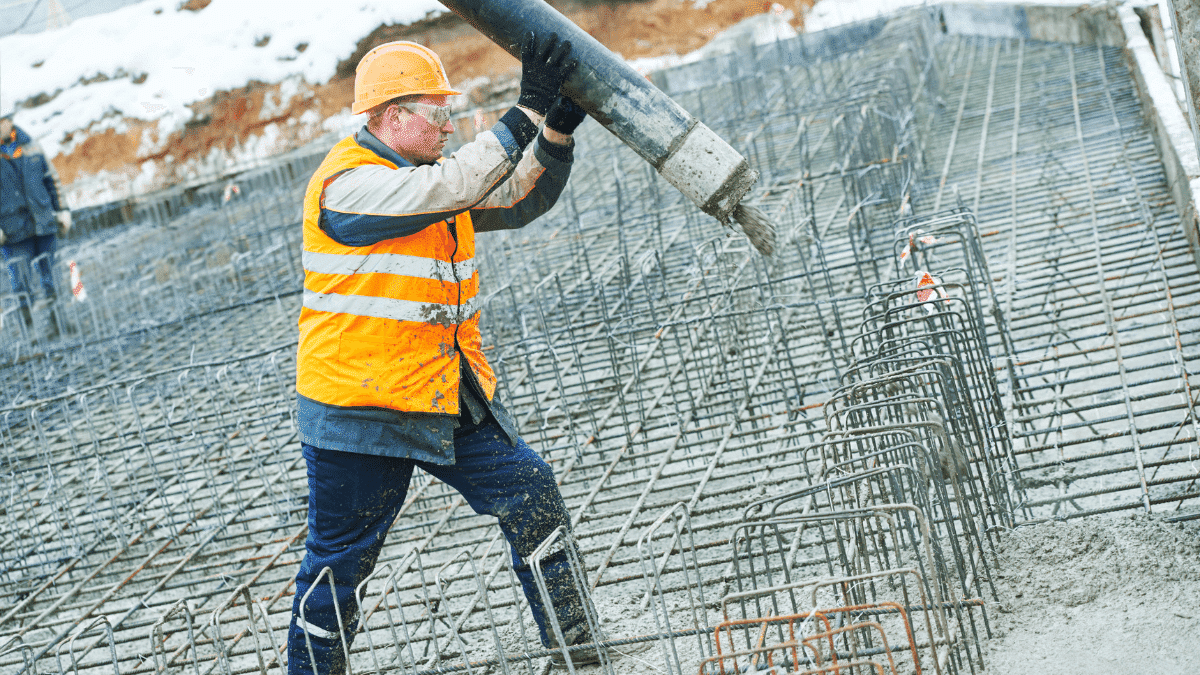Concrete Contractors Colorado Springs are skilled individuals who handle concrete in all its stages. They use their knowledge, expertise, and experience to create the highest quality results for their clients.

Good concrete contractors have a solid business sense, including hiring practices, accounting, and estimating. They also know how to properly file mechanic’s liens and work with general contractors.
Site preparation is a critical part of the construction process and determines how well the rest of the project goes. It involves a variety of activities, including clearing the construction site, grading and leveling the land, installing utilities, and more. The site preparation process can take one or two months, depending on the size of the project and the amount of earthwork required. It is best to leave this task to professionals, as they have the equipment and experience necessary to complete it quickly and efficiently.
The first step in site preparation is removing all obstacles from the construction site. This includes removing trees, bushes, and debris, as well as demolishing any existing structures that are on the property. Once the site is cleared, the crew can begin working on the foundation of the new building. This step is very important because if it is done incorrectly, the entire building could shift or collapse.
Another important aspect of site preparation is establishing controls to prevent soil and water runoff from damaging the surrounding environment. This may involve the use of silt fences, biobags to filter contaminants, and the construction of retaining walls. It is also important to mark the location of underground pipes. This will help prevent accidents and reduce the risk of pipes bursting during construction.
Finally, preparing the site for concrete slab foundations includes grading and leveling the land and installing utilities. This will ensure that the rest of the construction process is smooth and efficient. It will also allow for quicker completion of the project, as it will be easier to access and move materials around the construction site. In addition, a properly prepared construction site will be safer for workers as it will be free of any obstructions or hazards.
Formwork
The formwork process is one of the primary duties and responsibilities of concrete contractors. It helps them create the mold that the concrete will take while it is being poured. It is also necessary for achieving the desired shape of the finished concrete structure.
Depending on the type of work being done, there are different types of formwork that can be used. These include:
The construction of the formwork should be rigidly constructed and efficiently propped and braced in both horizontal and vertical directions so as to retain its shape. It must also be capable of being removed at various stages without causing any damage to the concrete being poured. It should also be made of material that is easily available and can be used multiple times.
Once the formwork is in place, it is important that all concrete contractors monitor it closely to make sure that it does not show any signs of failure or collapse. In order to do this, a competently designated observer must remain on site to continuously check the condition of the formwork deck during concrete placement operations. It is also important to monitor the formwork deck to make sure that vertical and horizontal movements do not exceed the specified limits.
While bidding on a project, it is important that concrete contractors take the time to fully understand the client’s expectations for the job. This can be done by closely reading the posting and, if possible, speaking directly with the client. It is also recommended that a contractor visit the jobsite or examine pictures of the premises in order to more thoroughly understand the details of the project before calculating their bid.
Mixing Concrete
Mixing concrete is the first step in the process of building with concrete. Concrete contractors can use the concrete mixing process to create a mixture of cement, water, and aggregates that is suitable for the project at hand. This can be done by hand, by using a machine onsite, or by having a concrete mixer truck deliver a pre-made mixture (known as “ready mix”). Mixing concrete by hand is most often used for small do-it-yourself projects such as laying sidewalks and anchoring fence posts. For larger projects, a concrete mixing machine is typically used.
The mixing method is important for the quality of the concrete and the resulting strength. When a contractor mixes concrete by hand, they must pay close attention to the ratio of materials needed. For example, too much water can make the concrete weak and clump together, while too little water will cause it to flow and not stick together properly. With a concrete mixer, these concerns are eliminated as the mixer automatically adjusts to produce the perfect amount of concrete for any job.
When mixing concrete by machine, it is important that the equipment is kept clean to avoid contamination and ensure that the machinery is working properly. It is also important to understand how the machine works and how to best use it. For example, the order in which the concrete constituents are loaded into the mixer could affect certain concrete properties such as the water-cement ratio and slump or consistency. It is important to know how to best load the mixer to achieve a high-quality concrete mix.
Finally, the concrete must be transported from the mixer to the construction site. This can be done by hand, by having a concrete mixer truck transport the pre-made mixture to the site, or by using a portable concrete mixer on the construction site. In either case, the concrete must be carefully transported to ensure that its water-cement ratio, slump or consistency, air content, and homogeneity are not altered from their intended states.
Pouring Concrete
Concrete is a superior building material that can be used for nearly every type of construction project. Whether it is for a foundation, slab, driveway, or sidewalk, pouring a solid concrete structure requires careful planning to achieve the best results. A concrete contractor can assist in preparing the site, ordering the correct mix, ensuring critical equipment is onsite when needed, and executing a successful pour.
The pouring process involves placing the concrete in sections, which are leveled and smoothed with a screed board or float. This allows for more control over the finished product and minimizes mistakes. Once the concrete is poured, it must be properly cured. This means keeping it moist and at a consistent temperature until it is hard.
To ensure the proper consistency of the concrete, a contractor may test it by conducting a slump test. A good batch of concrete will have a slump that is neither too dry nor too soupy. A slump that is too dry will result in weak concrete, while a slump that is too soupy will make the concrete unworkable. The contractor can determine the ideal slump for the job by observing its texture as well as consulting with the concrete supplier.
A contractor should also protect the concrete with tarps during the curing process. This will prevent rain from soaking into the concrete and causing it to crack and fail prematurely. Once the concrete is fully cured, it can be removed from the form and reused as required. Be sure to use a quality waterproofing concrete sealer as opposed to de-icing salts, which corrode and damage the surface.
Finishing Concrete
The concrete finishing process is the last step in the concrete construction project. It aims to give the concrete the desired smoothness, texture, and durability. This allows for easy maintenance, protection from water seepage, and can also be used for aesthetic purposes. It can be done in a variety of ways, depending on the type of concrete and its function.
The first thing the concrete contractor will do in this phase is “screed,” or cut off, any excess concrete and bring the surface to the correct height. This can be done using a special tool called a screed board or with a straight piece of 2×4.
Once the slab is properly leveled, it will be prepared for further concrete finishing steps. A bull float is then used to flatten any ridges or holes in the slab and to embed aggregate particles further into the concrete. This helps simplify the next finishing steps, which include a trowel finish, texture, or broom finish.
A steel trowel is then used to smooth out the concrete’s surface. This is done by sweeping the steel trowel over the concrete in large arcs while applying pressure. Care should be taken not to trowel too deep or to use “air-entrained” concrete mixes, as this could release the air bubbles and prevent the concrete from setting correctly. Larger troweling tools, often referred to as fresnos, are handy for tackling larger slabs.
Depending on the concrete’s intended use, it may be necessary to add some color or stain to the concrete before finishing. This can be done by spraying the concrete with a colored powder or using pigments that are mixed into the concrete prior to pouring it.
